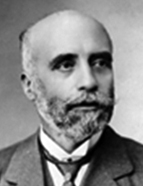

In a letter to Martins Sarmento, Leite explained that philology and archaeology were different approaches to the same issue: «I do not devote myself to philology merely for art’s sake, but because I wish to contribute to the resolution of our ethnic problem with philology, that being also the reason why I devote myself as much as I can to ethnology: indeed, the study of old coins in general and particularly the study of the so-called Celtiberian coins should yield plenty of data» Cartas de José Leite de Vasconcelos a Martins Sarmento [Letters from José Leite de Vasconcelos to Martins Sarmento], 1958, p. 94).
In the early 1890s, he planned the establishment of an ethnographic museum in Lisbon with a view to compiling materials dispersed across different institutions and new archaeological findings. In this endeavour, he had the support of Bernardino Machado, the minister for public works, who founded the museum in 1893 and appointed Leite as director. The initial collection brought together the collections of Estácio da Veiga and Leite’s private collection. The museum was installed in the building of the Academia das Ciências de Lisboa [The Lisbon Academy of Sciences] in 1894, but in 1900 Leite managed to have it moved to an area adjoining the Convento dos Jerónimos [>Hieronymites Monastery], its definitive location. It opened its doors to the public in 1906 but had been disseminating news and archaeological studies in O Arqueólogo Português [the Portuguese Archaeologist], the museum’s official journal, since 1895.
While working for the museum, Leite divided his time between archaeological excavations in Portugal and frequent trips to Europe. In those study trips, he managed to balance his institutional representation activities, intense philological research in ancient library collections and contacts with universities. He repeatedly visited Spain, France, Belgium, Germany, Switzerland, Austria and Italy.
In 1896, he published a synthesis of his research orientations in the Revista Lusitana [Lusitanian Journal] in which he justified the confluence of ethnographical, archaeological and linguistics studies as the necessary basis for the elaboration of a plan of works «on the origins and traits of the Portuguese people». Despite the abundance of dialectological materials at his disposal, he kept postponing the publication of conclusions or results; for an overall characterisation of Portuguese dialectology, a systematic collection of data from all the regions of the country was essential, and it was this he endeavoured to accomplish in the following years.
